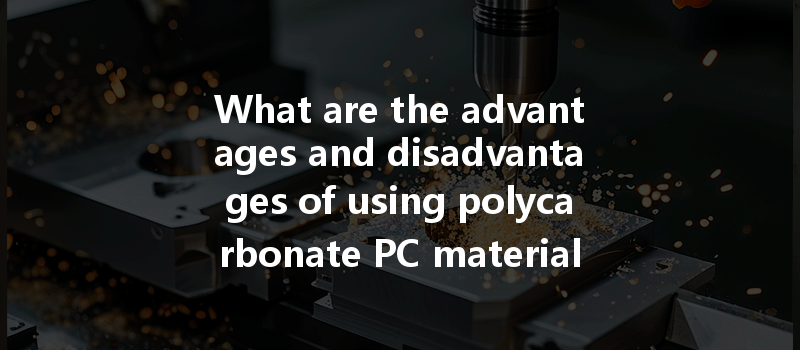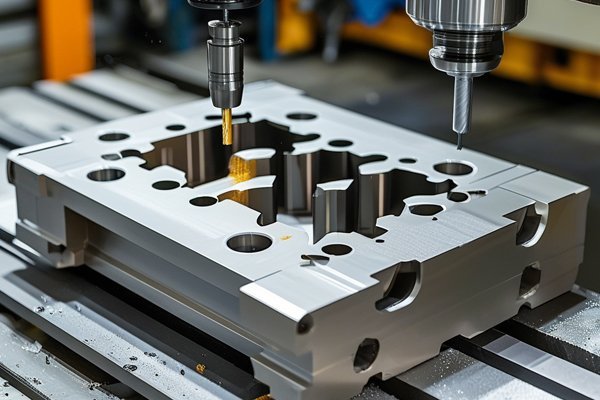: The Versatility of Polycarbonate in Engineering
Did you know that polycarbonate (PC) is reputed to be nearly 200 times stronger than glass? This impressive strength-to-weight ratio makes polycarbonate an increasingly popular choice in the realm of CNC (Computer Numerical Control) prototyping. Engineers and designers often struggle with the challenging balance of strength, weight, and cost when choosing materials for their prototypes. As new technologies continue to evolve and provide myriad options, understanding the pros and cons of polycarbonate can help in making informed decisions for your next CNC project.
Overview of Polycarbonate as a Material
Polycarbonate is a group of thermoplastic polymers containing carbonate groups in their chemical structure. Renowned for its clarity and toughness, PC is used in numerous applications, from eyewear lenses to safety glasses and automotive parts. This blog aims to explore the advantages and disadvantages of using polycarbonate in CNC prototyping, providing insights that can enhance your decision-making process.
Advantages of Polycarbonate in CNC Prototyping
1.1 Exceptional Strength and Impact Resistance
One of the primary advantages of polycarbonate is its incredible strength and impact resistance. It can endure high-pressure situations without breaking or deforming, making it an excellent choice for prototypes that require durability. This feature is particularly useful in product testing, where real-world conditions must be simulated.
1.2 Lightweight Properties
Another advantage is polycarbonate’s lightweight nature. Compared to metals and glass, PC reduces the overall weight of the prototype. This characteristic is vital for many industries, especially in automotive and aerospace engineering, where every gram counts.
1.3 High Clarity and Aesthetic Quality
Polycarbonate provides remarkable transparency, allowing for optics-related applications where visibility and light transmission are essential. It can be molded into various shapes, making it an attractive choice for aesthetic-quality prototypes.
1.4 Temperature Resistance
PC can withstand a broad temperature range—from -40°C to 120°C (or -40°F to 248°F)—making it versatile in different environments and applications. This temperature resistance is particularly crucial for prototypes that might experience high heat or cold in testing.
1.5 Chemical Resistance
Polycarbonate displays good resistance to various chemicals, including acids and bases, making it suitable for a range of industries, including medical and laboratory applications. While PC is not as chemically resistant as some other materials, it can adequately handle most common chemicals used in production settings.
1.6 Easy to Machine and Fabricate
CNC machining techniques enable efficient shaping and fabrication of polycarbonate, a plastic that is relatively easy to mold, cut, and finish. Its workability simplifies the prototyping process, which can help reduce lead times and costs.
Disadvantages of Polycarbonate in CNC Prototyping
2.1 Susceptibility to Scratching
While polycarbonate is tough, it can be prone to scratching, particularly on surfaces exposed to frequent abrasion. This aspect might not be ideal for applications where aesthetics matter significantly.

2.2 UV Sensitivity
Polycarbonate can degrade or yellow when exposed to prolonged UV radiation. This problem makes it less suitable for outdoor applications unless specifically treated with UV stabilizers.
2.3 Higher Cost Compared to Other Plastics
Polycarbonate is generally more expensive than other common thermoplastics like ABS (Acrylonitrile Butadiene Styrene) or PVC (Polyvinyl Chloride). When budget constraints exist, this could potentially limit its use for certain prototypes.
2.4 Thermal Expansion Issues
Polycarbonate can experience significant thermal expansion when subjected to heat. This property can result in dimensional changes which may affect design tolerances.
2.5 Limited Electrical Resistance
While polycarbonate can resist some chemicals, it can also lose its mechanical properties when exposed to certain solvents. Therefore, when electrical insulation is required, opt for other materials if extreme conditions are anticipated.
Best Practices for Using Polycarbonate in CNC Prototyping
3.1 Selecting the Right Grade of Polycarbonate
Choose the correct grade of polycarbonate based on the specific requirements of your project. Industrial-grade PC may offer enhanced durability compared to standard grades, particularly beneficial for high-stress prototypes.
3.2 Designing with Tolerances in Mind
Due to potential thermal expansion and material properties, it’s essential to design with tolerances accounted for. Use CAD software simulations and analyses to validate designs before moving into machining.
3.3 Post-Machining Treatments
After CNC machining, consider if post-processing methods like polishing, coating, or heat treatment are necessary to achieve the desired finish or performance characteristics.
3.4 Maintenance Considerations
If the prototypes are to be used functionally, consider how they will be maintained. Using UV-protected grades and hard coatings will prolong the life of your prototypes.
3.5 Understanding the Limitations
While PC has numerous advantages, it’s crucial to acknowledge its limitations. Always assess the application requirements and consider alternative materials if polycarbonate does not meet the specific needs.
: Making Informed Choices with Polycarbonate
In conclusion, polycarbonate (PC) offers a blend of impressive strength, lightweight properties, and aesthetic flexibility that makes it a advantageous choice for CNC prototyping. However, it is essential to weigh the advantages against some of its limitations, including susceptibility to scratches and cost considerations.
As technology progresses, the opportunities to use polycarbonate in innovative ways will undoubtedly expand, making its understanding and application crucial for engineers and designers. By carefully evaluating the specific needs of your project and following best practices, you can leverage the unique benefits of polycarbonate while mitigating its drawbacks.
In an era where engineering solutions demand versatility and performance, the decisions we make about materials fundamentally impact our project’s success. Exploring the benefits and challenges of polycarbonate reveals why this material is worth considering, sparking thoughts about its potential applications in your next endeavor. By keeping these insights in mind, you can confidently navigate the complex landscape of CNC prototyping to achieve optimal results.






